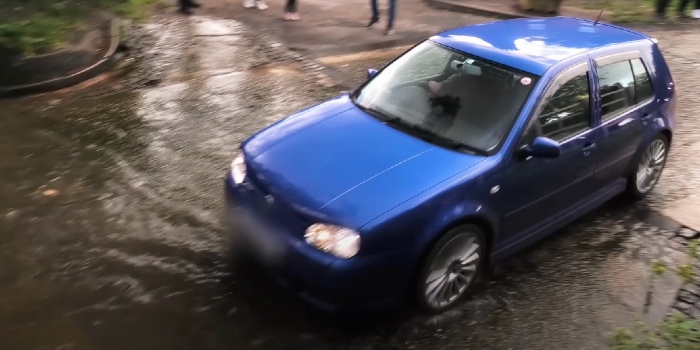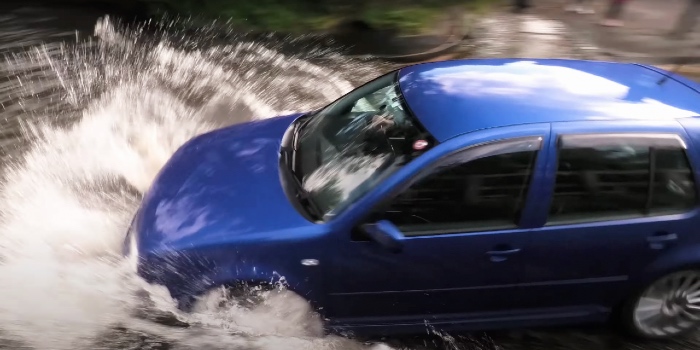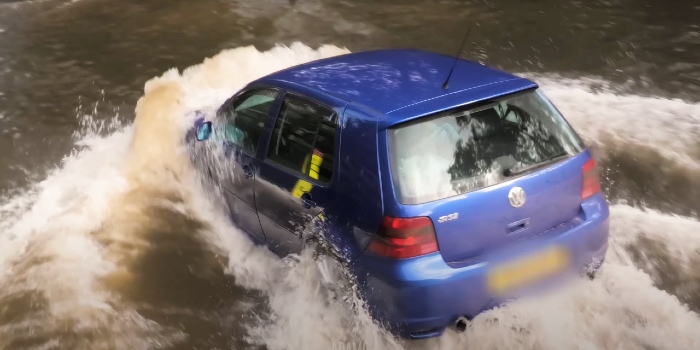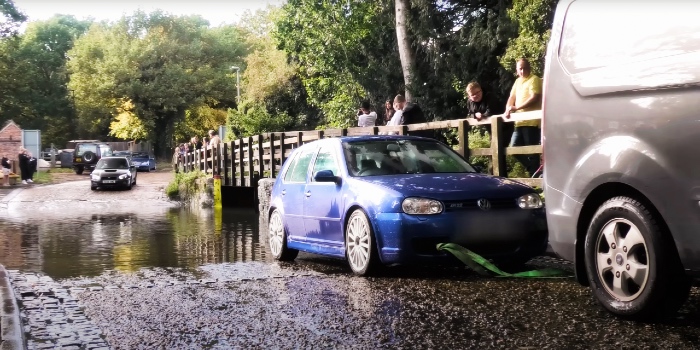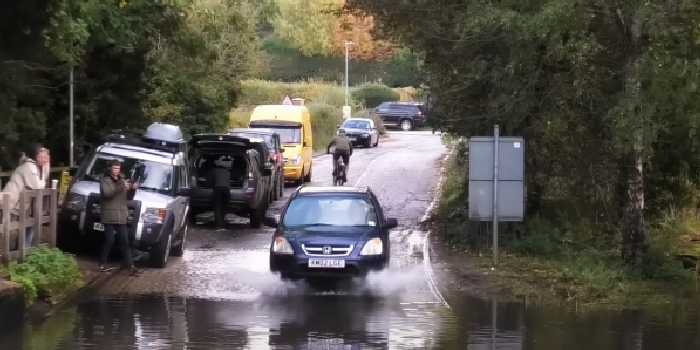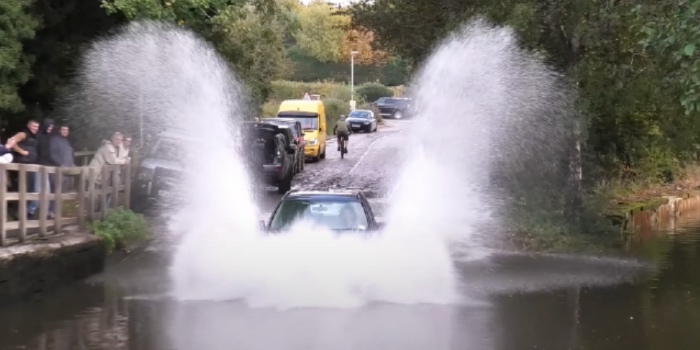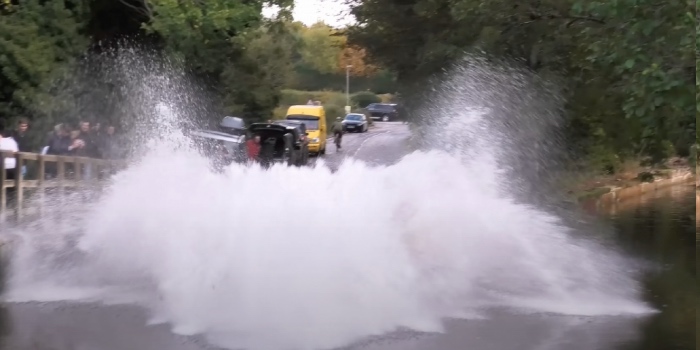First some advice on how to drive through floodwater, then an entertaining pictorial tutorial on how NOT to drive through floodwater.
If there’s a possibility of flooding or other road hazards such as slips or fallen trees, AA’s key advice is to avoid travel, unless absolutely essential.
AA says you could also run into insurance problems if things go wrong, so it’s best to check your vehicle usage policies before setting out.
But if you do have to drive when there’s been heavy rain and flooding, here’s what to do…
Tips on driving through floodwater
- Make sure your vehicle is up for the task. If you have an SUV, ute or raised-suspension vehicle you can pass through deeper water than a standard car.
- The standard car sill height is around 15-20cm. In water a foot deep (30cm), most cars will start to float or feel a bit light. At double that depth you are in danger of being swept away in flowing waters.
- Drive in the middle of the road. The crown of the road is usually higher than the sides. Driving in the middle also reduces the risk of driving onto a soft verge or hitting a kerb.
- The recommended speed is 5 km/h maximum when driving through water. Any faster and you can overtake the bow wave generated at the front of the vehicle, which means deeper water beside your vehicle than if you keep that bow wave ahead of you. A small bow wave keeps the water beside the car lower than it might otherwise be.
- Keep the revs up. Use first gear to keep the revs higher; if your car has an automatic transmission, lock it into low gear. Keeping the revs high helps stop water from entering the exhaust and filling the muffler or catalytic converter, while also reducing the risk of the car stalling.
- Driving into deep water at speed is like driving into a wall. The resistance of the water will slow your vehicle down extremely quickly and can easily rip number plates and splash guards off. The bow wave will pass through the radiator and into the engine bay, and water can be sucked into the engine. Because water doesn’t compress, even a small amount can cause “hydraulicking” or “hydrolocking” of your engine. This is usually catastrophic and requires a complete engine rebuild.
- If a vehicle is coming in the other direction, let it past first so that your two bow waves don’t meet.
- If you’re following another vehicle, wait for it to clear the flood… if it becomes stranded you don’t want to be trapped behind. As soon as you lose momentum, you can run into trouble.
- Once out of the floodwater, lightly apply your brakes to clear moisture from them and make sure they’re working properly. You don’t want to wait until you need to stop to find out they’re not working.
- The AA recommends you get your air filter checked if the pressure wave in front of the vehicle was near bonnet level, because this is usually where the engine air intake is.
- If your vehicle was trapped in flood waters and has water inside, do not attempt to power up the system or start the vehicle, because water could be inside the engine and electrical systems. You are advised to call your insurance company and follow their recommendations.
- If your vehicle was submerged in flood waters, it will quite likely be written off. The electrics, safety systems, engine and drive train will be full of water and may not recover even if dried out. The cost of replacing all the electrical and safety systems alone could cost more than the value of the vehicle.
A pictorial tutorial on how NOT to drive through floodwater
